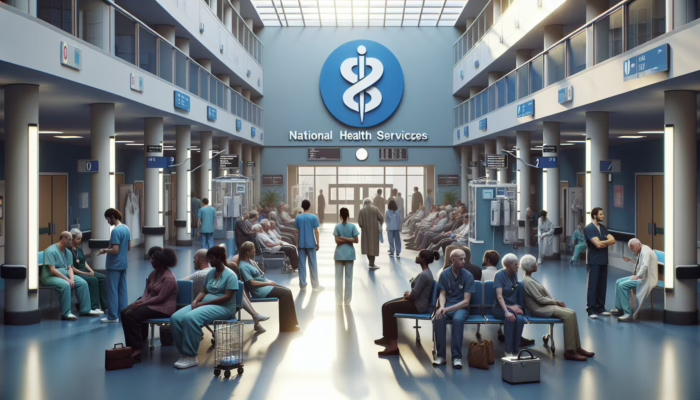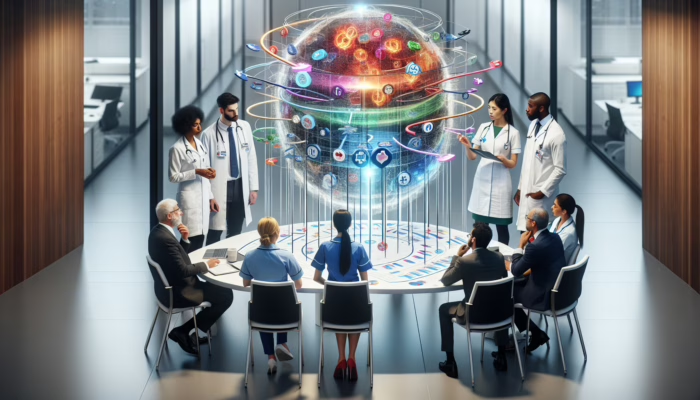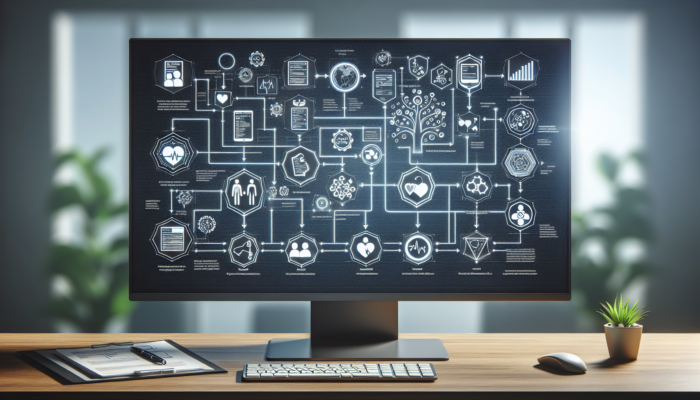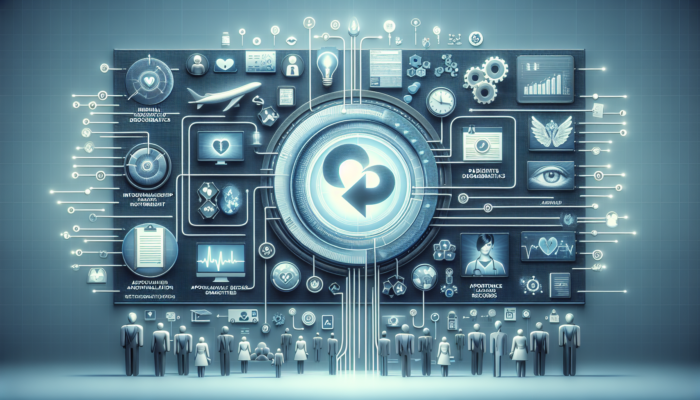Exploring the Financial Landscape of UK Healthcare
Identifying the Key Stakeholders in UK Healthcare Finance
In the United Kingdom, the financial landscape of healthcare is shaped by pivotal stakeholders such as the NHS, private insurance companies, and a diverse range of healthcare providers. The NHS serves as the cornerstone of publicly funded healthcare in England, delivering an extensive array of services to its citizens. Its funding model predominantly hinges on taxation, which influences the financial interactions and collaborations within the healthcare sector. In contrast, private insurers offer alternative pathways for accessing healthcare, providing plans that may complement NHS services or facilitate expedited treatment options. Various healthcare providers, including hospitals and outpatient clinics, operate within this financial framework, managing their relationships with both the NHS and private insurers to secure the necessary funding and resources.
Grasping the roles of these stakeholders is vital for effective management of financial partnerships. The NHS functions as a gatekeeper for public funding, while private insurers inject competitive dynamics into the marketplace, fostering innovation and operational efficiency. Each partnership must consider the distinct operational frameworks and expectations inherent to these entities. For example, while the NHS prioritises equitable access and public health outcomes, private insurers may focus on customer satisfaction and profitability, potentially leading to conflicts or synergies in the dynamics of their partnerships.
Navigating the Regulatory Landscape Governing UK Healthcare Finance
Understanding the regulatory environment is paramount for fostering effective financial partnerships in the UK healthcare arena. The Health and Social Care Act serves as a foundational pillar of this regulatory framework, outlining how partnerships should be structured and the compliance standards that must be met. This legislation underscores the importance of transparency, accountability, and adherence to established standards in both public and private healthcare financing.
Additionally, regulatory bodies such as the Care Quality Commission (CQC) and the Financial Conduct Authority (FCA) provide essential oversight and ensure adherence to financial regulations. These organisations play crucial roles in safeguarding that healthcare providers and insurers uphold standards that protect patient interests and public funds. Non-compliance with these regulations can result in severe repercussions, including hefty fines and the revocation of operational licences, making compliance not just a legal necessity but also a strategic imperative in managing partnerships effectively.
How Does the Funding Mechanism of UK Healthcare Operate?
The funding mechanism for healthcare in the UK, chiefly through the NHS, significantly influences the structure of financial partnerships. A thorough understanding of its framework and implications is essential for all stakeholders involved.
- It is primarily financed through general taxation, facilitating universal access to healthcare.
- Resource allocations are determined based on population health needs, ensuring equitable distribution of funds.
- The private sector’s role is expanding, offering additional services that operate outside the NHS framework.
- Performance-related funding mechanisms are being introduced to promote efficiency and enhance patient outcomes.
- Public health initiatives often receive funding through specific grants allocated to local authorities.
- Collaboration between the NHS and private insurers is creating hybrid funding models for certain healthcare services.
- Financial partnerships frequently comprise a blend of public and private funding sources to optimise resource utilisation.
This funding model shapes the way financial partnerships are constructed, necessitating a comprehensive understanding of funding flows, accountability protocols, and the expectations held by both NHS and private sector partners. As healthcare demands evolve and financial constraints mount, the need for collaboration becomes increasingly crucial.
Assessing the Influence of Economic Policies on UK Healthcare Finance

Economic policies significantly impact the financial framework of UK healthcare. Government decisions regarding taxation, public expenditure, and budget allocations have direct repercussions on how resources are distributed across the NHS and associated healthcare entities.
For example, austerity measures enacted during economic downturns can lead to diminished funding for public health initiatives, thereby affecting the resources available for financial partnerships. Conversely, periods of economic prosperity may result in increased investments in healthcare, facilitating stronger partnerships and collaborative service delivery efforts. Understanding these economic fluctuations is vital for stakeholders involved in healthcare finance as they strategise for future partnerships and align their objectives accordingly.
Moreover, the introduction of policies designed to enhance health outcomes, such as the NHS Long Term Plan, exemplifies the interplay between economic policies and healthcare financing. These initiatives often require healthcare partnerships to swiftly adapt to new directives, shifting priorities, and evolving funding channels. Hence, staying attuned to the economic climate and its ramifications for healthcare finance is essential for sustainable partnership management.
Expert Strategies for Effectively Managing Healthcare Financial Partnerships
What Challenges Do UK Healthcare Partnerships Encounter?
Healthcare partnerships in the UK face a multitude of challenges that can impede their effectiveness and long-term viability. A primary issue is regulatory compliance, as the landscape is in a constant state of flux, with new laws and directives frequently altering operational requirements. Ensuring that all partners adhere to pertinent legislation, such as the Health and Social Care Act or GDPR, necessitates diligent oversight and often significant investment in compliance mechanisms.
Funding limitations imposed by budgetary constraints within the NHS represent another critical challenge. Healthcare providers frequently find themselves competing for scarce resources, which can create friction within partnerships. For instance, during periods of austerity, various NHS trusts have had to prioritise certain services, thereby impacting partnerships that depend on shared resources. These financial pressures can engender mistrust and limit the scope of collaboration.
Moreover, differing organisational cultures between public and private entities can result in misalignment of goals and expectations. For example, a private provider may prioritise operational efficiency and profitability, whereas an NHS partner might concentrate on equitable service delivery and patient outcomes. This disparity can complicate decision-making processes and undermine the overall success of financial partnerships.
Effective Strategies for Cultivating Successful UK Healthcare Financial Collaborations
Navigating the intricacies of UK healthcare financial partnerships requires the implementation of several strategies to foster success. Foremost among these is the establishment of clear communication channels. Regular meetings and updates between partners ensure that all stakeholders remain aligned concerning objectives, expectations, and challenges. Implementing structured communication protocols can significantly mitigate misunderstandings and enhance collaborative efforts.
Another essential strategy is the formulation of shared goals. Partners should collaboratively define mutual objectives that resonate with their respective missions while also considering patient needs. This alignment nurtures a sense of ownership and commitment to the success of the partnership. For instance, if both parties aim to reduce patient wait times, they can pool resources and expertise to develop innovative solutions together.
Conducting regular evaluations is vital for assessing the partnership’s effectiveness and pinpointing areas for improvement. Periodic reviews of financial performance and service delivery outcomes enable partners to recalibrate their strategies as necessary. This dynamic approach ensures that partnerships remain adaptable and responsive to the evolving demands of healthcare.
How Can UK Healthcare Partnerships Improve Patient Care?
Financial partnerships within the UK healthcare sector can profoundly enhance patient care by enabling better resource allocation and improving health outcomes. When organisations collaborate financially, they can pool resources to invest in advanced technologies, staff training, and infrastructure improvements that directly benefit patient care.
For instance, partnerships between NHS trusts and private healthcare providers have facilitated the development of integrated care systems that streamline patient pathways and reduce unnecessary delays. By aligning financial incentives with patient outcomes, these collaborations foster a more holistic approach to healthcare delivery, ultimately leading to heightened patient satisfaction and improved health results.
Moreover, financial partnerships can enable innovative care models that address specific health challenges. By sharing financial risks and rewards, partners can experiment with new service delivery methods, such as telehealth initiatives that have gained prominence post-pandemic. This not only enhances access to care but also offers patients the flexibility to receive treatment in a manner that suits their individual needs.
In essence, the impact of financial partnerships on patient care is substantial, allowing for more efficient resource utilisation, encouraging innovation, and enhancing overall health outcomes across the UK healthcare system.
Establishing Robust Financial Partnerships in UK Healthcare
How to Identify Potential Financial Partners in UK Healthcare?
Selecting the right partners within the UK healthcare sector is critical for establishing successful financial collaborations. This process entails evaluating potential partners based on a set of criteria that ensures alignment with organisational goals and financial robustness.
- Assess financial stability and creditworthiness to guarantee partner reliability.
- Examine alignment of goals and values, particularly regarding patient care and operational efficiency.
- Evaluate previous experience and expertise in managing similar partnerships.
- Ensure the ability to comply with regulatory requirements and industry standards.
- Assess willingness to engage in transparent communication and collaborative decision-making.
- Investigate reputation and credibility within the healthcare sector.
- Evaluate capacity for innovation and adaptability to changing healthcare demands.
- Review experience in managing risks and financial challenges effectively.
By meticulously vetting potential partners against these criteria, healthcare organisations can forge partnerships that are not only financially sound but also strategically advantageous. A well-chosen partner can complement existing capabilities and enhance service delivery, ultimately contributing to improved patient outcomes and financial performance.
Strategies for Negotiating Financial Agreements in UK Healthcare
Effective negotiation is fundamental to successful financial partnerships in UK healthcare. It requires a nuanced understanding of the needs of both parties and the regulatory constraints that govern these relationships. The negotiation process should commence with an open dialogue regarding each partner’s objectives, capabilities, and expectations. This dialogue sets the foundation for a mutually beneficial agreement, ensuring that both parties feel valued and understood.
Beyond outlining financial terms, negotiations must also encompass operational considerations, including service delivery expectations, performance metrics, and quality standards. For instance, if a private provider collaborates with an NHS trust, it is crucial to establish clear benchmarks for patient care quality and reporting mechanisms that ensure adherence to both NHS standards and contractual obligations.
Additionally, establishing provisions for dispute resolution within the agreement can prevent misunderstandings from escalating into significant conflicts. Clear guidelines on how disputes will be managed prepare both parties for potential challenges, allowing them to address issues swiftly and efficiently, thus minimising risks to the partnership.
What Are the Best Practices for Financial Management in UK Healthcare?
Implementing best practices in financial management is essential for sustaining successful partnerships within UK healthcare. One of the foremost practices is ensuring transparency in financial reporting and decision-making. All involved parties should have access to relevant financial data and performance metrics, fostering trust and accountability within the partnership.
Regular audits also play a critical role in best practice. Conducting systematic reviews of financial operations helps identify inefficiencies, compliance issues, and areas for enhancement. This proactive approach not only bolsters financial oversight but also strengthens the overall partnership by ensuring that all stakeholders adhere to agreed-upon standards and practices.
Adhering to UK financial regulations is paramount for upholding the integrity of partnerships. Understanding and complying with financial governance frameworks, including guidelines issued by the NHS and other regulatory bodies, equips partners to effectively navigate the complexities of healthcare finance. Developing robust compliance protocols can significantly mitigate risks associated with regulatory breaches.
Ultimately, embracing these best practices ensures that healthcare financial partnerships are not only effective but also resilient in the face of evolving challenges within the healthcare landscape.
How to Monitor and Evaluate UK Healthcare Financial Partnerships?
Regular monitoring and evaluation are essential to ensure that UK healthcare financial partnerships achieve their intended objectives. Establishing a framework for ongoing assessment enables partners to remain agile in their operations and responsive to changing conditions. Regular reviews should focus on measuring both financial performance and healthcare delivery outcomes, utilising key performance indicators (KPIs) tailored to the partnership’s goals.
For instance, monitoring financial metrics such as cost savings, return on investment, and resource utilisation can yield insights into the partnership’s financial health. Simultaneously, evaluating patient care indicators, such as patient satisfaction scores and treatment outcomes, aids in assessing the partnership’s impact on service delivery.
It is vital to create feedback loops that promote open communication between partners regarding performance insights. This ongoing dialogue not only nurtures a culture of continuous improvement but also allows for timely adjustments to strategies and operations as necessary. By proactively monitoring and evaluating performance, partnerships can adapt to challenges and opportunities, ensuring alignment with healthcare objectives and financial goals.
Identifying and Mitigating Risks in UK Healthcare Financial Partnerships
How to Evaluate and Mitigate Financial Risks in UK Healthcare?
Risk management is a critical component of managing financial partnerships in UK healthcare. Assessing and mitigating financial risks necessitates a thorough analysis of both internal and external factors that could impact the partnership’s financial stability and operational effectiveness.
To begin, it is crucial to identify potential risks, such as fluctuations in funding, regulatory changes, and market dynamics. Conducting a comprehensive risk assessment can help partners understand their exposure to these risks.
- Implement robust financial controls to monitor spending and resource allocation.
- Establish contingency plans for unexpected financial shortfalls.
- Regularly review and update risk management strategies based on market trends.
- Foster a culture of transparency and open communication regarding risks.
- Utilise financial forecasting models to anticipate potential funding fluctuations.
- Engage with stakeholders to ensure alignment on risk tolerance and management practices.
- Adopt insurance solutions to safeguard against specific financial losses.
- Conduct regular training on risk awareness and management for all partners.
By adopting a proactive stance towards risk assessment and mitigation, healthcare partnerships can protect their financial health and ensure they remain well-positioned to deliver quality care to patients.
Exploring the Legal Considerations for UK Healthcare Financial Partnerships
Understanding the legal landscape is vital for managing financial partnerships in UK healthcare. Legal considerations encompass a variety of laws and regulations that govern financial transactions, data protection, and service delivery. For instance, compliance with the Data Protection Act is crucial, especially when handling sensitive patient data within financial agreements. Partners must ensure they have adequate measures in place to protect patient information, including encryption and secure data storage protocols.
Furthermore, contractual agreements should clearly outline the terms of the partnership, including financial obligations, service delivery expectations, and mechanisms for dispute resolution. Legal counsel should be involved in drafting and reviewing these agreements to ensure they comply with relevant laws and protect the interests of all parties involved.
Another critical legal consideration is compliance with competition laws, particularly when establishing partnerships that may influence market dynamics. Ensuring that the partnership does not inadvertently create anti-competitive practices is essential for maintaining regulatory compliance and securing the long-term viability of the partnership.
By addressing these legal factors, healthcare financial partnerships can operate within a framework that safeguards their financial interests while also respecting patient rights, ultimately ensuring a sustainable and ethically sound collaboration.
What Common Pitfalls Should Be Avoided in UK Healthcare Financial Partnerships?
Despite their potential for success, UK healthcare financial partnerships often encounter common pitfalls that can undermine their effectiveness. A prevalent issue is misaligned expectations between partners. When organisations enter partnerships without a clear understanding of one another’s objectives, it can lead to conflicts and dissatisfaction. Establishing shared goals and maintaining open communication is vital to mitigating this risk.
Another significant pitfall is inadequate risk management. When partners fail to identify and assess potential risks, they may find themselves unprepared for challenges that arise. This oversight can result in financial instability and erode trust between partners. Therefore, implementing robust risk management protocols is essential for sustaining partnerships over time.
In addition, changes in the regulatory environment can pose challenges for partnerships that do not adapt swiftly. The UK healthcare landscape is continually evolving, and partners must remain vigilant and responsive to these changes to avoid compliance issues that could jeopardise their collaboration.
To avert these pitfalls, organisations should invest time in understanding each partner’s strengths, weaknesses, and operational culture. This commitment to ongoing dialogue and adjustment fosters resilience within partnerships, enabling them to thrive despite external pressures.
How Can Effective Communication Strengthen UK Healthcare Financial Partnerships?
Effective communication is a linchpin in the management of UK healthcare financial partnerships. Clear and open lines of communication foster trust, collaboration, and alignment among partners. Regular communication ensures that all stakeholders are informed about key developments, challenges, and opportunities, allowing for timely interventions and adjustments.
Establishing structured communication protocols, such as regular meetings or updates, can enhance collaboration by providing a platform for partners to discuss performance metrics, financial health, and service delivery outcomes. Furthermore, utilising digital tools and platforms for communication can streamline information sharing, making it easier to track progress and address issues in real time.
Moreover, fostering a culture of transparency encourages partners to voice concerns and share insights. This openness leads to proactive problem-solving and helps mitigate potential conflicts before they escalate. When partners feel comfortable expressing their thoughts and ideas, it creates a conducive environment for innovation and continuous improvement.
Ultimately, effective communication enhances alignment on goals, cultivates trust among partners, and ensures that all parties are committed to the partnership’s success. By prioritising communication, healthcare organisations can strengthen their financial partnerships and improve overall service delivery.
The Transformative Role of Technology in Managing Risks in UK Healthcare Financial Partnerships
Technology plays a transformative role in managing the risks associated with financial partnerships in UK healthcare. Advanced tools such as data analytics, electronic health records, and blockchain technology can enhance transparency and efficiency while mitigating financial risks. Data analytics enables partners to monitor financial performance and identify trends that could signal potential issues, empowering proactive responses to challenges.
Blockchain technology provides a secure method for tracking transactions and ensuring data integrity, particularly when sharing sensitive information between partners. This level of security builds trust and reduces the risk of data breaches, which can have severe financial consequences for healthcare organisations.
Moreover, implementing financial management software can streamline budgeting processes, improve forecasting accuracy, and facilitate compliance with regulatory requirements. These systems allow partners to monitor expenditures in real time, fostering transparency and accountability within the partnership.
By effectively leveraging technology, healthcare organisations can enhance their risk management strategies, ensuring that financial partnerships remain robust and resilient in an ever-evolving landscape.
Evidence-Based Benefits of Managing Healthcare Financial Partnerships
What Are the Economic Advantages of Financial Partnerships in UK Healthcare?
Effective financial partnerships within UK healthcare yield significant economic benefits that resonate throughout the healthcare system. By pooling resources and expertise, these collaborations can lead to cost savings through shared services, minimised duplication of efforts, and streamlined operations. For example, partnerships between NHS trusts and private providers aimed at tackling waiting list backlogs can effectively lower costs related to patient delays and associated complications.
Furthermore, financial partnerships can enhance resource allocation by enabling investments in cutting-edge technologies and innovative care solutions. When various organisations collaborate financially, they can jointly fund initiatives that might be too costly for a single entity, leading to improved service delivery and patient outcomes. This collaborative approach can ultimately translate into enduring cost efficiencies for the entire healthcare system.
Additionally, as partnerships enhance healthcare delivery, they can also lead to increased patient satisfaction, positively impacting the overall economic performance of healthcare providers. Satisfied patients are more likely to utilise services, recommend providers to others, and contribute positively to the healthcare economy.
In summary, the economic impact of financial partnerships is profound, addressing immediate financial concerns while fostering long-term sustainability and growth within the UK healthcare landscape.
How Do Financial Partnerships Elevate the Quality of UK Healthcare?
Financial partnerships have the potential to significantly enhance the quality of healthcare in the UK. By aligning resources and expertise, these collaborations enable providers to offer superior services and improve patient outcomes. For instance, when NHS trusts collaborate with private healthcare providers, they can implement innovative treatment options and advanced technologies that may not be accessible within the public sector alone.
Moreover, financial partnerships often facilitate the exchange of best practices and learning opportunities among partners, leading to enhanced service delivery and patient care protocols. By learning from one another’s successes and challenges, healthcare organisations can implement evidence-based practices that elevate overall quality.
Furthermore, partnerships can secure better funding for essential services, ensuring that healthcare providers possess the resources required to deliver high-quality care. This influx of funding can be directed towards training healthcare professionals, upgrading facilities, and investing in critical infrastructure, all of which contribute to improved healthcare quality.
Ultimately, the synergy created through financial partnerships not only enhances operational efficiency but also raises the standard of care available to patients across the UK healthcare system.
Exploring Successful Case Studies of UK Healthcare Financial Partnerships
Examining successful case studies of financial partnerships within UK healthcare provides valuable insights into best practices and potential benefits. One notable example is the collaboration between a leading NHS trust and a private hospital group aimed at addressing elective surgery backlogs. By working together, the NHS trust leveraged the private group’s facilities and staff, significantly reducing waiting times for patients while sharing associated costs.
Another successful case study involves a partnership among multiple NHS trusts to implement a shared electronic health record system. This initiative not only decreased administrative costs but also improved patient outcomes by ensuring that all healthcare providers had access to comprehensive and up-to-date patient information. The collaboration demonstrated that leveraging collective resources can lead to innovative solutions that benefit both healthcare providers and patients alike.
These examples underscore the importance of establishing clear goals, maintaining open communication, and fostering a culture of collaboration. By analysing these successful partnerships, organisations can identify key factors contributing to their effectiveness and apply similar strategies to enhance their financial collaborations.
Strategies for Negotiating and Sustaining UK Healthcare Financial Partnerships
Negotiating and sustaining effective financial partnerships within UK healthcare requires strategic planning and proactive management. To begin, organisations should establish a clear understanding of their objectives and desired outcomes prior to entering negotiations. This foundational knowledge enables partners to articulate their needs effectively and cultivate a collaborative negotiation environment.
During negotiations, it is crucial to explore creative solutions that can benefit all parties involved. For instance, rather than merely discussing financial contributions, partners can investigate resource-sharing arrangements or performance-based incentives that align their interests. This approach fosters a spirit of collaboration rather than competition, resulting in more robust agreements.
Once partnerships are established, ongoing relationship management is essential for sustainability. Regular check-ins and performance reviews facilitate open dialogue and enable partners to address issues as they arise. Engaging stakeholders from both organisations in these discussions ensures that diverse perspectives are considered and that the partnership remains aligned with its objectives.
Additionally, fostering a culture of continuous improvement guarantees that partnerships evolve alongside changes in the healthcare landscape. By remaining adaptable and responsive to emerging challenges and opportunities, healthcare organisations can sustain their financial partnerships over the long term.
Integrating Technology in UK Healthcare Financial Management
How Can Technology Enhance Financial Partnerships in UK Healthcare?
Technology serves as a powerful enabler of enhanced financial partnerships within UK healthcare. Digital solutions such as financial management software, data analytics platforms, and electronic health records can streamline processes, boost transparency, and facilitate collaboration among partners. For example, employing financial management software allows organisations to track expenditures and monitor budget performance in real-time, ensuring that all partners are informed about financial health and resource allocation.
Data analytics can provide valuable insights into patient care trends, enabling partners to make informed decisions regarding resource allocation and service delivery. By effectively leveraging data, organisations can pinpoint areas for improvement and optimise their operations to enhance patient outcomes.
Furthermore, technology enables secure communication and information sharing between partners. Digital platforms facilitate quick access to critical data and documents, promoting collaboration and reducing administrative burdens. This streamlined approach enhances the efficiency of financial partnerships, allowing partners to concentrate on delivering high-quality care rather than becoming bogged down in logistical challenges.
Overall, embracing technology in financial management empowers UK healthcare organisations to forge stronger, more effective partnerships that respond to the evolving needs of the healthcare landscape.
Implementing Financial Management Systems in UK Healthcare
The implementation of robust financial management systems is a critical step for UK healthcare organisations seeking to enhance their financial partnerships. Selecting the appropriate systems necessitates careful consideration of organisational needs, existing infrastructure, and integration capabilities. A thorough assessment of various financial management solutions can ensure that the chosen system aligns with the organisation’s operational and strategic goals.
Once a system is selected, effective implementation requires a clear roadmap that outlines key milestones, responsibilities, and timelines. Engaging stakeholders from both organisations throughout the implementation process fosters buy-in and ensures that the system meets the needs of all partners.
Training and support for staff members using the financial management system are essential for maximising its effectiveness. This investment in human capital ensures that all users are proficient in navigating the system and leveraging its capabilities to enhance financial management practices.
Regular monitoring and evaluation of the financial management system following implementation are vital for identifying areas for improvement and ensuring it continues to meet the evolving requirements of the partnership. By adopting a proactive approach to system management, healthcare organisations can optimise their financial operations and fortify their collaborative partnerships.
What Are the Security Considerations for Financial Data in UK Healthcare?
Data security is paramount in managing financial partnerships within UK healthcare, particularly given the sensitive nature of patient information and financial data involved. Compliance with the General Data Protection Regulation (GDPR) is essential to safeguard personal data while ensuring that financial transactions are secure.
Healthcare organisations must implement robust security protocols, including encryption, secure access controls, and regular security audits. These measures protect financial data from cyber threats, data breaches, and unauthorised access. Additionally, fostering a culture of data awareness among staff is critical; training employees on data protection practices and the importance of safeguarding sensitive information can significantly mitigate security risks.
Furthermore, establishing clear data-sharing agreements between partners outlines how information will be accessed, stored, and protected. These agreements should include provisions for compliance with relevant regulations and detail the responsibilities of each partner in safeguarding data.
Ultimately, prioritising data security not only protects patient and financial information but also enhances trust among partners, ensuring that collaborations remain viable and effective in the long term.
Evaluating and Enhancing UK Healthcare Financial Partnerships
Identifying Key Performance Indicators for UK Healthcare Financial Partnerships
Establishing key performance indicators (KPIs) is crucial for evaluating the success of UK healthcare financial partnerships. KPIs act as measurable benchmarks that enable partners to assess their performance against established objectives and identify areas for improvement.
Some essential KPIs for healthcare financial partnerships may include:
- Financial metrics such as cost savings, return on investment, and budget adherence.
- Patient care indicators, including patient satisfaction scores and treatment outcomes.
- Operational efficiencies, such as reduced wait times and improved service delivery metrics.
- Compliance with regulatory standards and accuracy in financial reporting.
- Partner engagement metrics, including communication effectiveness and collaboration quality.
- Innovation indicators, such as the number of new initiatives launched through the partnership.
By regularly monitoring these KPIs, partners can gain insights into their performance, allowing for timely adjustments to strategies and operations. This data-driven approach not only fosters accountability but also promotes a culture of continuous improvement within the partnership.
How to Conduct Comprehensive Reviews of UK Healthcare Financial Partnerships?
Conducting comprehensive reviews of UK healthcare financial partnerships is essential for ensuring they remain effective and aligned with evolving healthcare goals. These reviews should be scheduled periodically, allowing partners to assess performance, discuss challenges, and celebrate successes.
The review process should involve a thorough evaluation of financial performance, service delivery outcomes, and compliance with regulatory requirements. Involving stakeholders from both organisations in these discussions ensures that all perspectives are considered, fostering a sense of shared ownership in the partnership’s success.
During these reviews, partners should also identify opportunities for enhancement and innovation. By collaboratively discussing potential improvements, organisations can adapt to changing healthcare demands and maintain their competitive edge in the sector.
Furthermore, documenting the outcomes of review meetings and decisions made is vital for maintaining accountability and tracking progress over time. This structured approach to regular reviews enables partners to remain agile and responsive to both challenges and opportunities, sustaining their partnership over the long term.
Strategies for Enhancing Outcomes in UK Healthcare Financial Partnerships
Enhancing the outcomes of UK healthcare financial partnerships necessitates a multifaceted approach prioritising continuous learning, feedback mechanisms, and adaptability. To begin, organisations should cultivate a culture of ongoing learning by encouraging partners to share insights, best practices, and lessons learned from both successes and challenges.
Establishing feedback loops is crucial for capturing the perspectives of all stakeholders involved in the partnership. Regular surveys, focus groups, and open forums can facilitate honest discussions about performance and areas for improvement. By actively soliciting feedback, organisations can identify actionable steps to enhance collaboration and service delivery.
Moreover, remaining adaptable to changes in the healthcare landscape is vital for sustaining successful partnerships. As healthcare needs evolve and new challenges emerge, partners should be willing to reassess their strategies and objectives, ensuring alignment with patient needs and organisational goals.
Ultimately, a commitment to continuous improvement and a proactive approach to enhancing partnership outcomes will position UK healthcare organisations for long-term success in delivering high-quality care and optimising financial performance.
Frequently Asked Questions
What Are Healthcare Financial Partnerships?
Healthcare financial partnerships refer to collaborations between organisations within the healthcare sector that pool resources and expertise to enhance service delivery and financial performance.
How Do Financial Partnerships Benefit Patients?
Financial partnerships can enhance patient care by enabling better resource allocation, fostering innovation, and improving service delivery, ultimately leading to better patient outcomes and satisfaction.
What Challenges Do UK Healthcare Partnerships Face?
UK healthcare partnerships often encounter challenges such as regulatory compliance, funding limitations, misaligned expectations, and cultural differences between public and private entities.
What Strategies Can Improve Communication in Healthcare Partnerships?
Establishing clear communication protocols, regular meetings, and open feedback loops can enhance communication among partners, fostering collaboration and reducing misunderstandings.
How Can Technology Enhance Healthcare Financial Partnerships?
Technology, such as data analytics and financial management software, can streamline processes, improve transparency, and facilitate collaboration between partners, enhancing overall efficiency.
What Are the Key Performance Indicators for Healthcare Partnerships?
Key performance indicators for healthcare partnerships include financial metrics, patient care indicators, operational efficiencies, regulatory compliance, and partner engagement metrics.
How Can Effective Risk Management Protect Healthcare Partnerships?
Effective risk management, including identifying potential risks, implementing robust financial controls, and fostering a culture of transparency, can safeguard healthcare partnerships from financial instability.
What Legal Considerations Are Important for Financial Partnerships?
Legal considerations include compliance with data protection laws, contractual obligations, competition regulations, and ensuring that partnerships adhere to relevant healthcare legislation.
How Can Regular Reviews Benefit Healthcare Partnerships?
Regular reviews enable partners to assess performance, discuss challenges, and identify opportunities for improvement, ensuring that partnerships remain effective and aligned with healthcare goals.
What Best Practices Can Ensure the Sustainability of Healthcare Financial Partnerships?
Best practices include transparency in financial reporting, regular audits, adherence to regulations, and fostering open communication to build trust and accountability among partners.
The post Managing Healthcare Financial Partnerships: Strategies for the UK appeared first on Healthcare Marketing Service.














